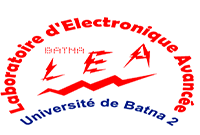Citation:
Abstract:
In this paper, a new heterojunction structure based on ultrathin-film ITO sputtered on non-hydrogenated amorphous-silicon (a-Si) is developed for high-detectivity solar-blind UV-photodetector (UV-PD) based on silicon (Si) photonics technology. A strategic combination of Particle Swarm Optimization (PSO) and numerical analysis is used to find out the best design offering superior optoelectronic performance. The optimized design is then elaborated using RF magnetron sputtering technique. A comprehensive investigation of the device structural and optoelectronic properties was carried out, incorporating the influence of heat treatment at temperature values ranging from 300°C to 600°C. X-Ray Diffraction (XRD) measurements indicate that the crystallinity of the sputtered layers was enhanced by increasing the annealing temperature. Significantly, photoelectrical characterization showed that the annealed ITO/a-Si UV-PD exhibits high detectivity exceeding 1013 Jones with a highly improved UV-to-Vis rejection ratio of 5.7 × 103. The ITO/a-Si heterojunction generated a built-in potential, enabling effective separation and transport of photo-induced carriers, thereby reducing recombination losses. Therefore, by well optimizing the proposed heterostructure and the annealing conditions, we were able to elaborate new highly detective, thin-film solar-blind UV-PD based on Si-photonics platform, which can be a promising alternative for future high-performance and cost-effective optoelectronic systems.
